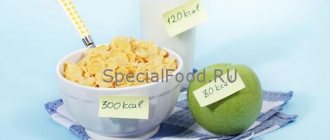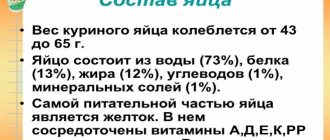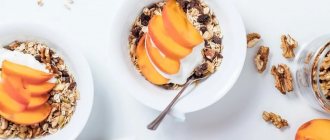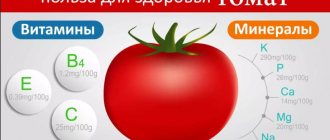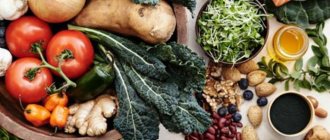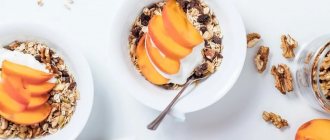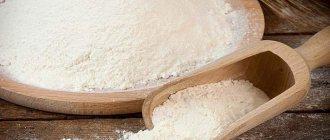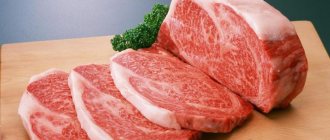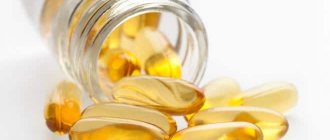Any person, one way or another, has been faced with the question of counting calories, proteins, fats and carbohydrates in the food they eat. But why make a list of the foods you eat every day? Why do you need to know food nutritional supplements and have food calorie tables at hand? Where else can you get this information? Let's find out together!
For those who want to have a slim and sculpted figure, a table of calorie content of basic foods is simply necessary. An athletic figure is a set of high-quality muscle mass, which differs significantly in quality from adipose tissue. You can lose weight or gain weight on any diet and see the desired results on the scale, but the reflection in the mirror can only record a deterioration in the quality of your body.
The secret to building good shape is hidden in calories and depends on adequate intake of nutrients for muscle growth and recovery, as well as physical activity.
This article contains complete information about the KBJU of the most commonly consumed products; each table is made for a specific group of food ingredients. All you have to do is correctly calculate the calorie content of your diet and create an appropriate menu.
Meat
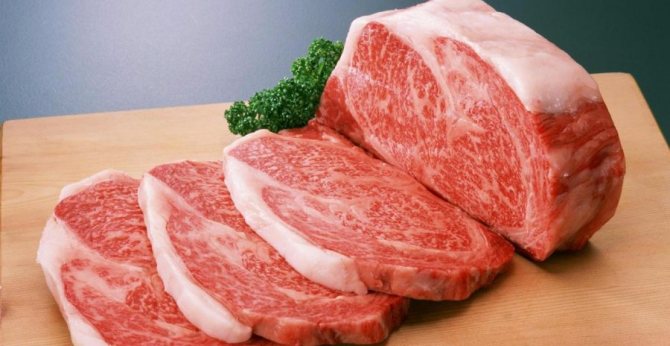
This is what tops the ranking of foods high in calories. Nutritionists consider pork to be the most satisfying. 100 g of this meat contains 491 kcal. The calorie content of pork fat (lard) is generally prohibitive - 797 kcal! The explanation is simple: 90% of the composition is fat.
All kinds of smoked and semi-smoked sausages are classified as unhealthy. They contain lard, pork and beef fat. There is a lot of cholesterol in chicken skin. You should also be careful when consuming meat from large and small livestock. The calorie content of these products varies within 300 kcal.
If we talk about products with moderate fat content, then this is rabbit, turkey, and chicken. They belong to a number of dietary ones.
What should be written on the label
The label must contain not only the name of the product and its manufacturer, but also the amount of proteins, fats, carbohydrates and calories per 100 g of product.
The composition of the product looks like a list - in a line separated by commas or a column. The bright inscriptions “non-GMO”, “natural”, “dietary” located on the label have nothing to do with the composition of the product. If a foreign-made product does not have a sticker with a translation into Russian and the coordinates of the supplier in Russia, the product most likely entered the market illegally and may be of poor quality. Buy only products with easy-to-read labels that indicate the nutritional value and composition of the product. What you need to know about nutritional supplements
A variety of food additives are an integral part of the modern nutrition industry. To avoid the fear of unfamiliar words on food labels and to know what exactly you are eating, read our materials. — The main thing about food additives — How additives with code “E” are separated — About the safety of food additives — The main thing about sweeteners — More information about the types and permissible dosages of sugar substitutes
Porridge
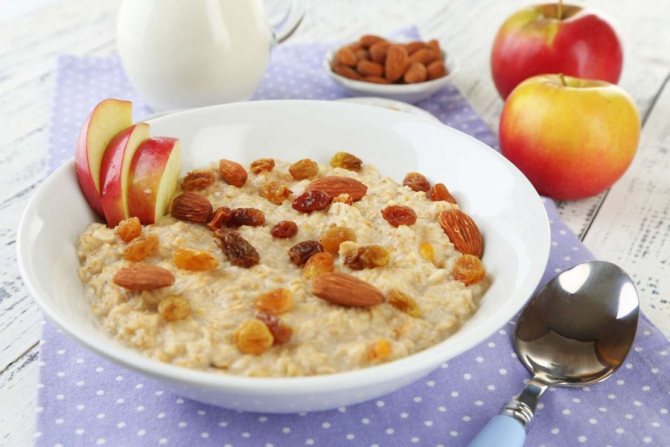
Porridge forms the basis of many diets. The most calories are in millet porridge (325 kcal), the least in oatmeal (88 kcal). At first glance, even these numbers are high. But it is worth considering that calories are calculated for a dry product. In addition, porridges maintain a feeling of fullness for a long time, thereby preventing the rapid expenditure of energy.
Slow carbohydrates in the composition are not their only advantage. Porridge contains fiber, which cleanses the intestines. Therefore, you can take any porridge for breakfast. True, it should be cooked with the addition of a minimal amount of butter.
Fish, seafood
Contains easily digestible protein, replenishes the deficiency of iodine and fatty acids. Seafood is indispensable for weight loss; due to its low calorie content, it is used even in strict nutritional systems.
Table for weight loss, calories in seafood and fish
| Products | kcal |
| Gobies | 85 |
| Dorado | 96 |
| Catfish | 126 |
| Squid | 100 |
| Flounder | 90 |
| crucian carp | 87 |
| Carp | 109 |
| Chum salmon | 131 |
| Mullet | 123 |
| Sprat | 192 |
| Crab | 82 |
| Shrimps | 85 |
| lobster | 93 |
| Bream | 105 |
| Lobster | 90 |
| Salmon | 153 |
| Mussels | 77 |
| Pollock | 72 |
| Burbot | 81 |
| Perch | 82 |
| Lobster | 89 |
| Halibut | 108 |
| Pangasius | 85 |
| Roach | 92 |
| Cancers | 76 |
| Carp | 97 |
| Herring | 128 |
| Salmon | 143 |
| Som | 115 |
| Horse mackerel | 120 |
| Zander | 84 |
| tilapia | 96 |
| Cod | 82 |
| Tuna | 144 |
| Oyster | 72 |
| Trout | 97 |
| Hake | 86 |
| Pike | 84 |
| Ide | 81 |
Vegetables and fruits
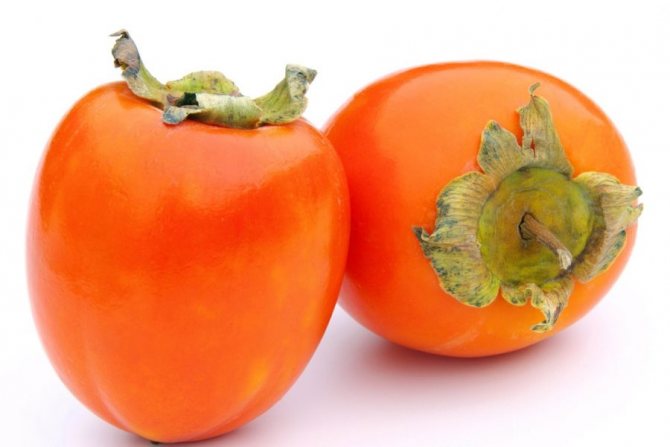
The calorie content of fruits is higher than that of vegetables due to the fructose and glucose they contain. Although in general the calorie content of these fruits is the lowest (rarely exceeds 50 kcal per 100 grams). But not all fruits are low-calorie. Exceptions are bananas, grapes and persimmons. Therefore, they should be considered a complete food.
Fruits contain a large amount of natural sugars. It is believed that the more sweet the fruit pulp is, the higher its energy value. The lowest calorie apples, apricots and citrus fruits.
Avocado is recognized as the fattest fruit on earth. 30% of its pulp consists of fat! If you try to separate the fruit from the peel, you will get the impression that you are cutting butter. If you spread it on bread, you get a hearty sandwich that can replace a regular sandwich with butter.
Due to loss of moisture, the calorie content of fruits prepared for the winter increases tenfold. The calorie content of all dried fruits is higher than their fresh counterparts. Heat treatment preserves beneficial substances, but significantly increases the sugar content. For example, the nutritional value of a fresh apple is 47 kcal, and a dried one is 253 kcal. The calorie content of dried fruits and candied fruits is very high, on average 200-400 kcal per 100 grams. Dried bananas have the most – 390 kcal.
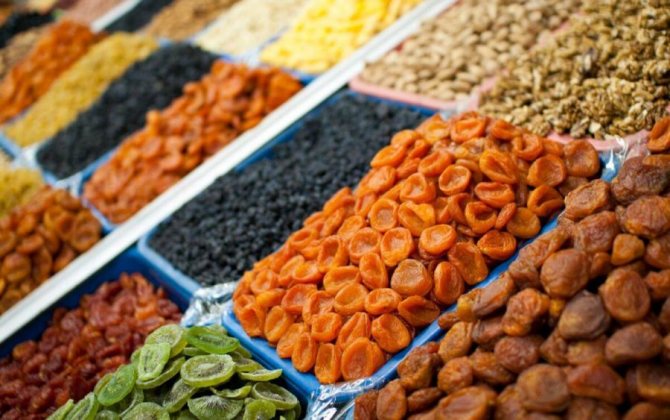
As for vegetables, they consist of a large amount of water (the only exceptions are legumes and potatoes). Therefore, they contain very few energetically valuable substances. Low-calorie - cucumbers (only 14 kcal), high-calorie - garlic (149 kcal), potatoes (80 kcal), beets (42 kcal).
To find out the calorie content of vegetables, you can use special tables. It should be borne in mind that data on fresh fruits may not always be a useful indicator, since many of the products are not consumed raw. The weight of cooked foods is greater, which means that the calorie content is distributed differently.
During cooking, some sugar is released into the water, which reduces the energy value. For example, the vinaigrette salad, beloved by many, has a calorie content of up to 95 kcal. The exception is vegetables containing starch (heat treatment makes them more nutritious).
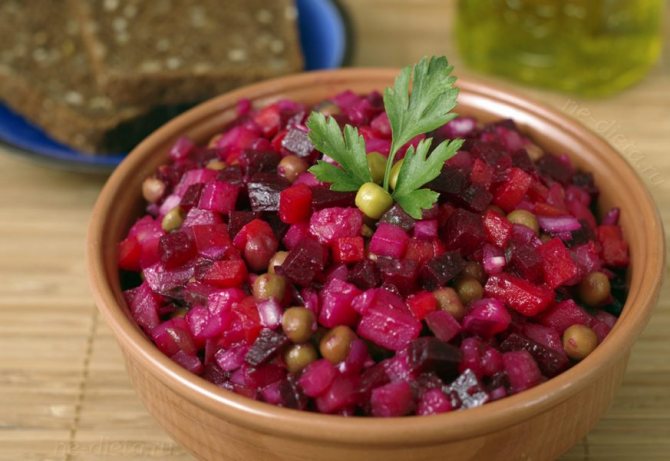
Freezing is the only way to “healthily” preserve food. In this case, the nutritional value does not change.
Proper diet for weight loss or healthy eating
Those seeking to get rid of extra centimeters cannot do without the following exceptions:
- sweets (chocolate, sugar, honey, condensed milk), use cinnamon instead;
- fried (it is better to boil or bake);
- salty and pepper (food should be neutral);
- flour (bread, buns, donuts, cakes, pastries).
Give up all this to achieve the desired result in the shortest possible time.
Mono-diets are very effective, but you can do without them. Table of products for weight loss:
| P | B | AND | U | TO |
| avocado | 2,0 | 20,0 | 7,4 | 208 |
| grapefruit | 0,7 | 0,2 | 6,5 | 29 |
| cabbage | 2,5 | 0,3 | 5,4 | 30 |
| spinach | 2,9 | 0,3 | 2,0 | 22 |
| rye bread | 11,0 | 2,7 | 58,0 | 310 |
| skim cheese | 16,5 | 1,3 | 71 | |
| kefir 0% | 3,0 | 0,1 | 3,8 | 30 |
| chicken breast | 29,8 | 1,8 | 0,5 | 137 |
| carrot | 1,3 | 0,1 | 6,9 | 32 |
The above components reduce appetite and burn fat deposits, contain useful vitamins and microelements. Drink plenty of fluids, especially water and green tea. For greater efficiency, include physical activity, go in for sports:
- run in the morning, go to the gym;
- do special exercises at home;
- work on problem areas (stomach, sides, legs, arms, back);
- check the calorie content of finished products using an online calorie analyzer.
Have dinner 2-3 hours before bedtime. Then the result will not be long in coming. Find a set of exercises on the Internet or consult with nutritionists and select an individual exercise routine.
High-quality weight loss does not cause anxiety, depression and stress, and promotes the formation of the right attitude towards food. Under no circumstances should you resort to “quick” diets that promise you a loss of 5 or even 10 kg in a week. They won't lead to anything good. It is best to get in shape a little bit without harming your health.
Nuts and seeds

Rich in nutrients, nuts are a great addition to your regular diet, as well as an excellent snack option throughout the day. However, even one glance at the table of their calorie content is enough to come to the conclusion that nuts are a high-calorie product that should be consumed very carefully.
The most nutritious are Australian macadamia (718 kcal), ours are pine nuts (680 kcal) and almonds (654 kcal). The calorie content of the rest is on average 500 kcal. Walnut contains 576 kcal.
Nuts are rich in Omega-3 fatty acids; they can replace meat products in terms of protein and solve the problem of “bad” cholesterol.
Fans of seeds should understand that even a small bag of this delicacy (90 g) is harmful to the pancreas and provides the body with a third of daily energy. In order not to gain weight, it is better not to abuse the seeds.
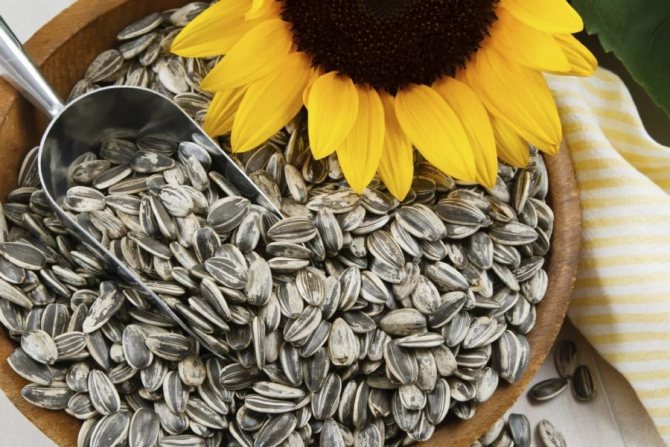
As for southern exotics, roasted chestnuts, although considered filling, are low in calories (only 182 kcal). The energy value of 380 kcal allows you, without thinking about weight, to enjoy another delicacy from supermarket shelves - coconuts.
How to create your diet taking into account dietary fat and calorie content
As mentioned above, to lose weight you will have to reduce the number of calories you consume. However, in addition to this factor, the BJU ratio has a huge impact on the benefits of the diet. How to choose their number? There are special formulas.
- Squirrels
. This includes all meat, dairy and fermented milk products, fish, eggs, legumes and seafood. The standard intake is 1.5–2 grams of protein from food per kilogram of body weight. - Fats
. The healthiest foods are those of plant origin: avocados, nuts, oils. Another valuable source of fats and omega-3 acids is fish. The optimal ratio is 0.8–1.1 g per 1 kg of weight. - Carbohydrates
. We are talking specifically about healthy foods: cereals, cereals, fruits, vegetables with a GI of up to 60 units. The optimal amount of carbohydrates consumed in a daily diet for weight loss is 2–3 g per kilogram of current weight.
Oil and fat
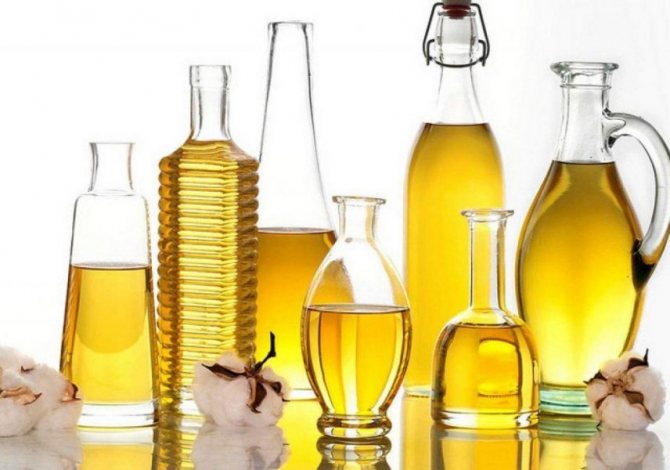
Vegetable oil is a must. But to get the fat a person needs, just one tablespoon is enough. The average calorie content of vegetable oil is 890 kcal. Popular in our country, sunflower, olive and flaxseeds occupy ranking positions in the list of high-calorie foods. Mayonnaise and various kinds of sauces were also on the “black” list.
Where to look for extra sugar
Excess fast carbohydrates are found in sweet soda, nectars, juice and energy drinks. A glass of regular fizz can contain up to 8 teaspoons of sugar. Especially carefully study the composition of so-called healthy products - muesli, cereal bars, instant cereals and products for children - manufacturers often add extra sugar to them. Try not to buy products with “hidden” sugar at all - because of them, the caloric content of your diet can completely get out of control.
Beverages
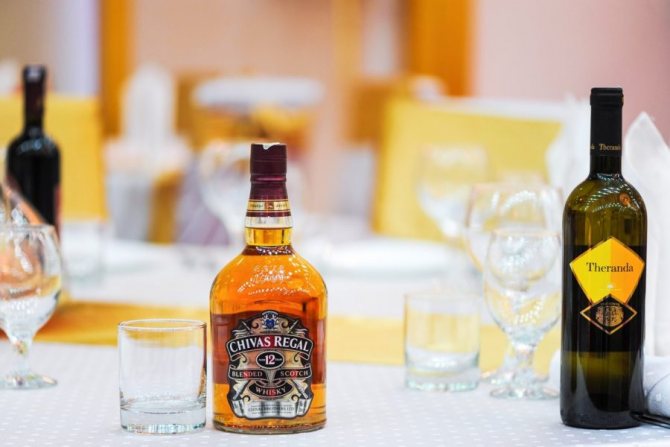
Everything is simple here: calorie content is directly proportional to the ingredients. First of all, it depends on the presence of sugar in the composition and on the strength of alcohol. The more chocolate, cream, honey and all kinds of syrups it contains, the greater the energy value. The record holder is hot chocolate with cream (500 kcal), as well as vodka with cognac (240 kcal).
Composition per 100 grams or per serving
The composition is usually indicated per 100 g of product. The package may contain more or less than this amount. Therefore, the content of certain ingredients will have to be recalculated to the actual weight of the package. Sometimes the composition of a product is indicated per serving, usually weighing less than 100 g, and there may be several of them in the package. In this case, you need to carefully look at how many servings the package contains and how to measure them. Always pay attention not only to the composition of the product, but also to the weight of the package and the number of servings in it.
Calorie content of ready meals
Only every tenth dish in the world can be called healthy, that is, one that contains up to 600 kilocalories. The food industry and the restaurant business offer their customers delicacies with enchanting tastes, but they contain hidden calories that can be hidden even in the most dietary, at first glance, dishes.
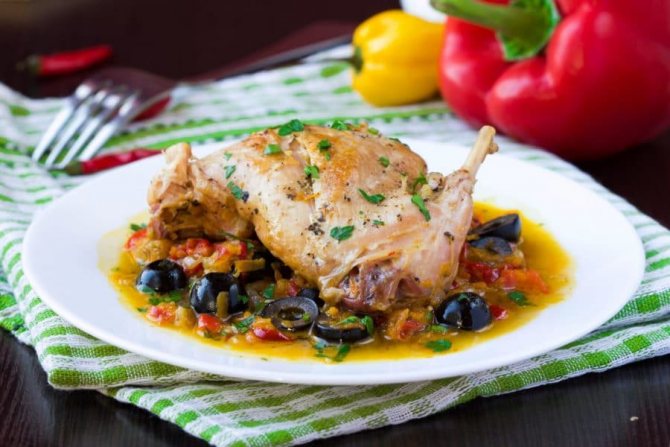
For example, a simple salad with cucumbers, cabbage and tomatoes, but combined with sauce - a time bomb. Frying in oil increases the number of calories by 3 times. But even this is not the worst thing about catering establishments. Employees of cafes, restaurants and culinary departments in city supermarkets add monosodium glutamate, emulsifiers, thickeners and all kinds of dressings to food. As a result, high-calorie foods cause addiction similar to nicotine.
Top 10 most high-calorie dishes
| Food | Trick |
| Sandwiches | 1500 kcal and 101 g fat. Chicken, pork and melted cheese in the composition do their job. |
| Peanut pie | "Trap" for a gourmet. Vegetable fat in the composition and as a result - more than 20 g of fat in each piece. |
| Burger | The taste is a bomb, the calories are a killer. A beef cutlet, devil's bun, bacon and cheese add up to 3,500 kcal. |
| Milkshake | Drinking whipped cream with sugar and chocolate in 10 minutes is almost your daily requirement of fat. 1680 kcal. |
| Foie gras | An unearthly delicacy, a fatty snack. 44 g fat and 462 kcal. |
| Aspic | A very high-calorie dish. Fatty meat, offal, and bones increase calorie content. The gravy in the jellied meat is pure cholesterol. Result – 330 kcal. |
| Sausage | Lard, meat from the shoulder blade, animal fat in the composition “kill” any organism. 100 g of slices contain 25 g of fat. |
| Ice cream | High concentration of milk fat. Pay for taste - 16 g of fat. |
| Chips/fast food | 557 kcal. In the literal sense of the word, they put a person “on the needle” of high-calorie nutrition. |
| Cookie | 502 kcal. Flour products are high in calories. But the cookies contain not only margarine, but also vegetable oil. |
How many calories should you eat per day?
Thus, the food consumed per day consists of 40% carbohydrates, 40% proteins, and 20% fats. The daily value of nutrient units depends on age, gender and level of physical activity.
For men
| 19-25 years old | 26-50 years | Over 51 years old |
| Passive lifestyle | ||
| 2400 kcal | 2000 kcal | 1800 kcal |
| Moderately active lifestyle | ||
| 2600-2800 kcal | 2500 kcal | 2300 kcal |
| Active lifestyle | ||
| 3000 kcal | 2800-3000 kcal | 2400-2800 kcal |
For women
| 19-25 years old | 26-50 years | Over 51 years old |
| Passive lifestyle | ||
| 2000 kcal | 1800 kcal | 1600 kcal |
| Moderately active lifestyle | ||
| 2200 kcal | 2200 kcal | 1800 kcal |
| Active lifestyle | ||
| 2400 kcal | 2200 kcal | 2000 kcal |
When planning your menu, we must not forget that in addition to the nutritional value of food, you need to take into account its quality. Therefore, it should be balanced, moderately saturated with dietary fat, the excess or lack of consumption of which leads to weight gain. It is advisable to add fresh vegetables, fruits and grains to your menu. Fiber will give you strength and energy throughout the day and will have a positive effect on your health, promoting weight loss.
For weight gain
Those wishing to gain weight should pay special attention to:
| P | B | AND | U | TO |
| sunflower seeds | 20,7 | 52,9 | 3,4 | 578 |
| kiwi | 1,0 | 0,6 | 10,3 | 48 |
| a pineapple | 0,4 | 0,2 | 10,6 | 49 |
| coffee | 0,2 | 0,3 | 2 | |
| beef | 18,7 | 12,6 | 191 | |
| ginger | 1,8 | 0,8 | 15,8 | 80 |
| cucumbers | 0,7 | 3,1 | 15 | |
| buckwheat | 4,5 | 1,6 | 27,4 | 137 |
| almond | 18,6 | 57,7 | 16,2 | 645 |
| Cherry juice | 0,7 | 0,0 | 10,2 | 47 |
| eggs | 12,7 | 11,1 | 0,6 | 153 |
| tuna | 23,0 | 1,0 | 101 | |
| lentils | 7,8 | 20,1 | 111 | |
| boiled turkey | 25,3 | 10,4 | 195 |
For bodybuilders during the cutting period, it is preferable to exclude sweets, fried and flour dishes from the diet, to focus on protein foods (B - 50%, F - 20%, U - 30%), fish, seafood, lean chicken fillet, nuts, vegetable oil , curd products with a minimum percentage of fat.
Weight Gain Products
Some people find it difficult to gain weight. Supplementing your diet with certain foods has been proven to affect muscle mass.
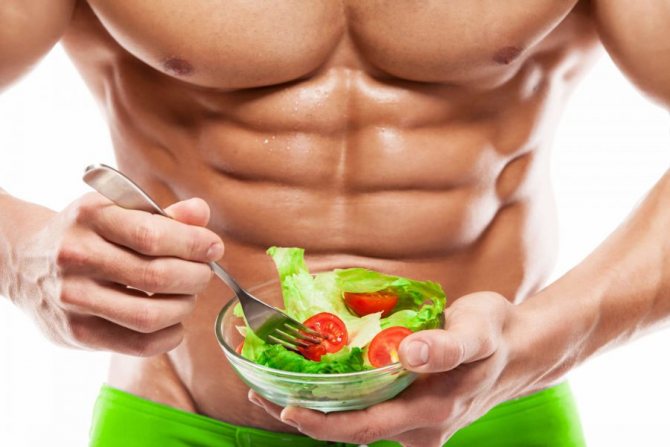
Foods that will help you gain weight:
- Homemade milk;
- Rice porrige;
- Nuts;
- Red meat;
- Starchy foods;
- Fatty fish;
- Protein dietary supplements;
- Protein shakes;
- Dried fruits;
- Black chocolate;
- Yogurt.
To gain muscle mass rather than fat, it is important not to forget about daily moderate sports activity.
What does the letter E mean in the name of nutritional supplements?
The letter E in the designation of food additives means that the substance has been approved by a special WHO commission for use in the European food industry. Numbers 100-180 – dyes, 200-285 – preservatives, 300-321 – antioxidants, 400-495 – emulsifiers, thickeners, gelling agents. Not all “E”s are of artificial origin. For example, E 440 is apple pectin, which is beneficial for digestion, E 300 is vitamin C, and E306-E309 is the well-known antioxidant vitamin E. The fewer additives a product contains, the easier it is to understand what it is made of. Carefully study the composition of any product.
